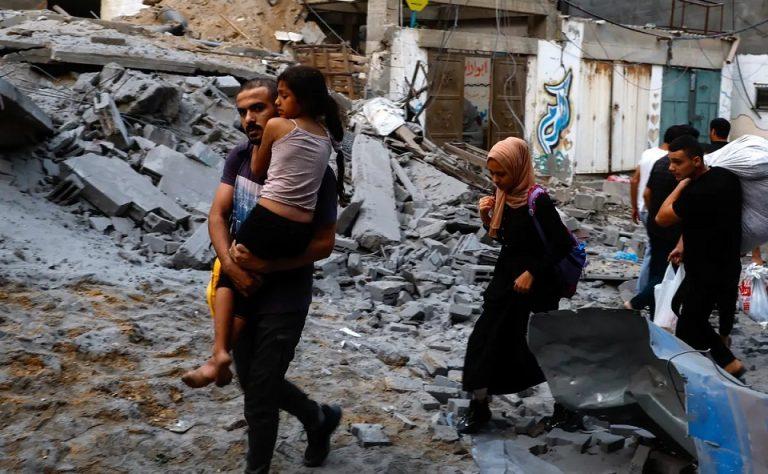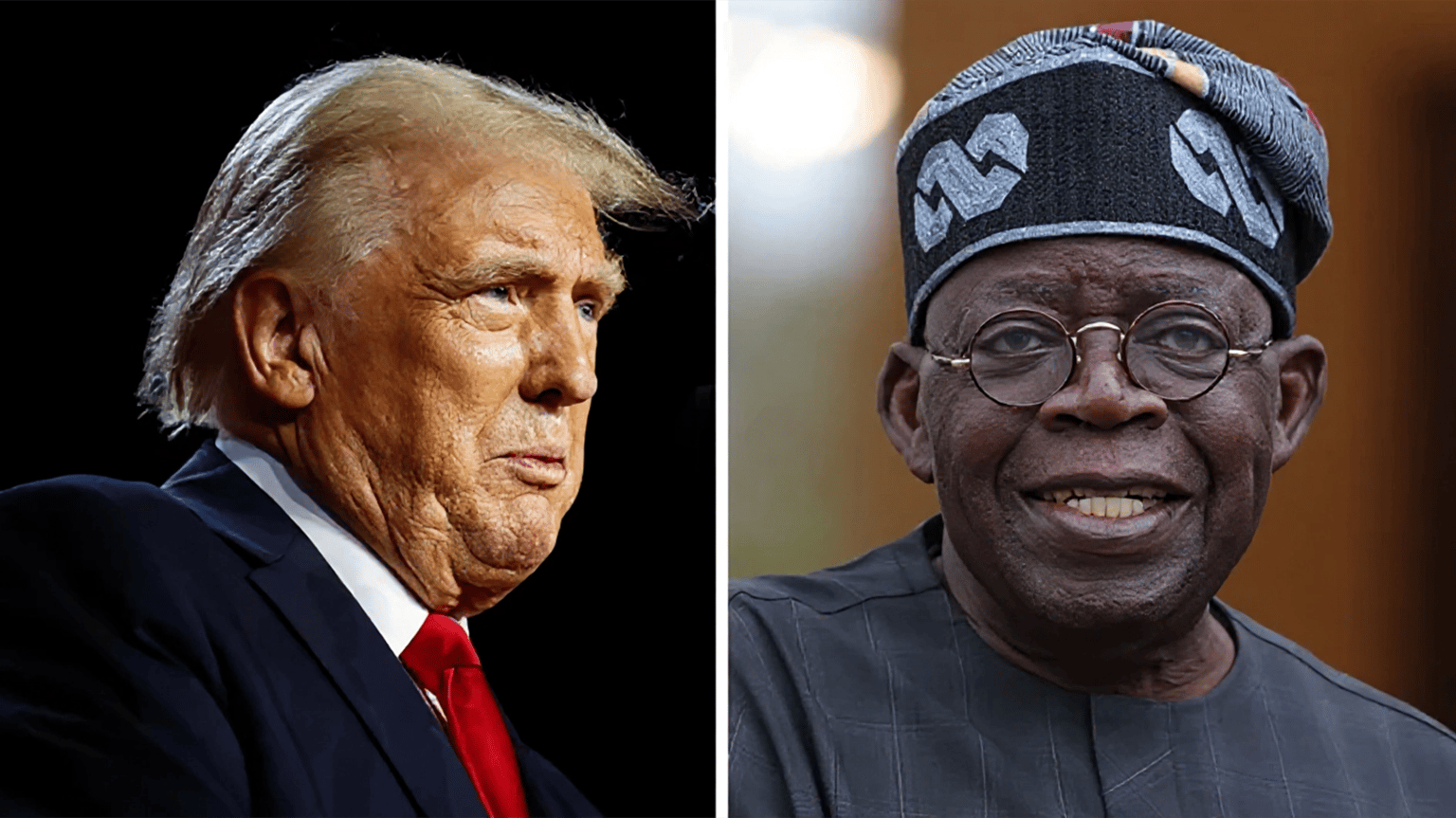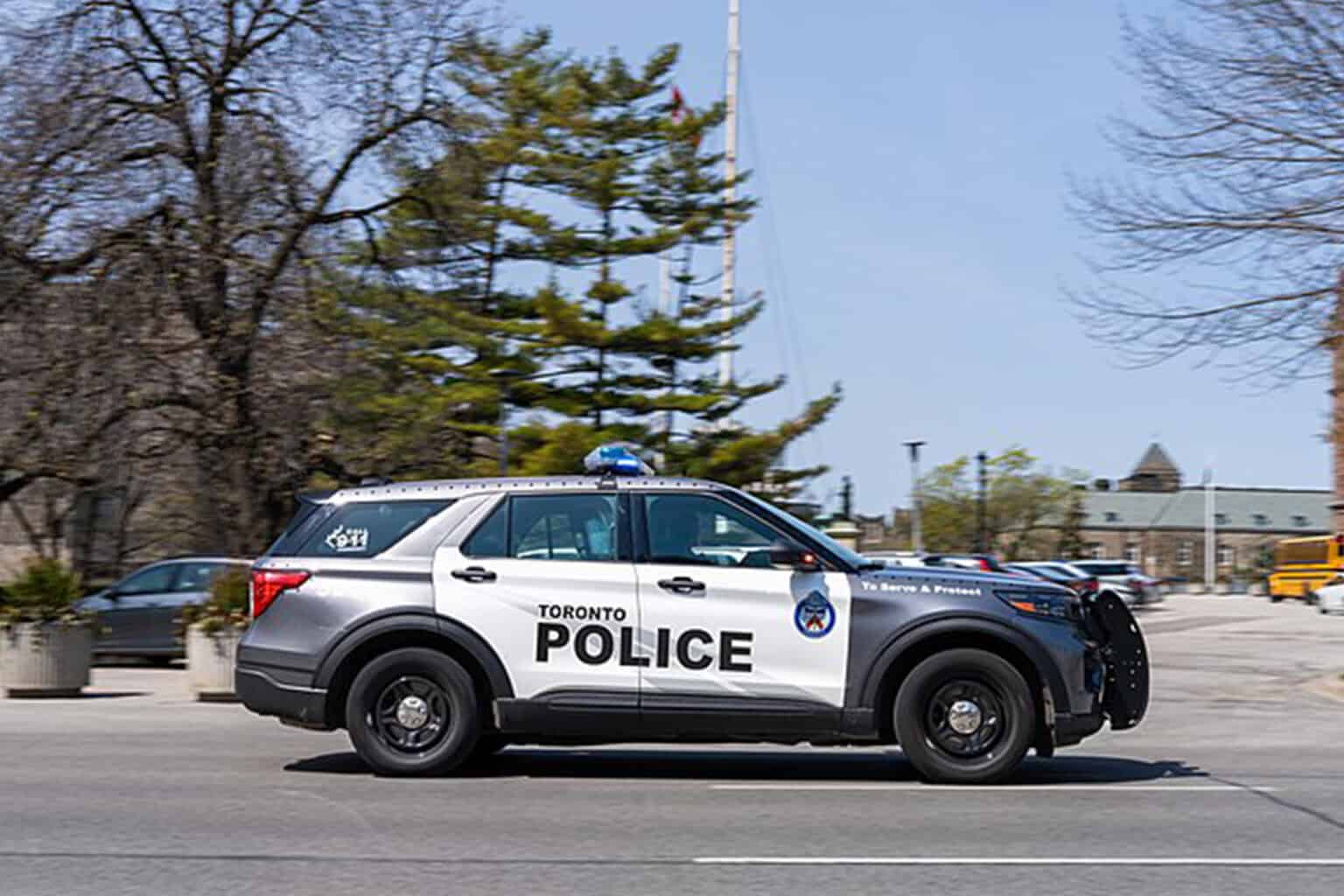Headline
WHO Says Gaza’s Al-Shifa Hospital A ‘Death Zone’, Urges Evacuation

Gaza’s largest hospital has become a “death zone,” the World Health Organisation said Sunday, announcing plans to evacuate the last remaining patients as Israel’s army said it was expanding operations to destroy Hamas.
The assessment came after a visit by WHO and other UN officials to the hospital, which Israeli troops raided earlier this week in pursuit of Hamas militants.
Elsewhere, a Hamas health official said more than 80 people were killed Saturday in twin strikes on a northern Gaza refugee camp, including on a UN school sheltering displaced people.
Social media videos verified by AFP showed bodies covered in blood and dust on the floor of a building where mattresses had been wedged under school tables, in Jabalia, the Palestinian territory’s biggest refugee camp.
Philippe Lazzarini, head of the UN Agency for Palestinian Refugees UNRWA, described “horrifying images” from the incident, while Egypt called the bombing a “war crime” and “a deliberate insult to the United Nations”.
A separate strike Saturday on another building in Jabalia camp killed 32 people from the same family, 19 of them children, Hamas health authorities said.
Without mentioning the strikes, the Israeli army said “an incident in the Jabalia region” was under review.
Israel has vowed to destroy the Palestinian armed group Hamas in response to the October 7 attacks, which Israeli officials say killed about 1,200 people, most of them civilians, and saw about 240 people taken hostage.
READ ALSO: Five Countries Seek ICC Investigation Into Gaza War
The army’s relentless air and ground campaign has since killed 12,300 people, more than 5,000 of them children, according to the Hamas government, which has ruled Gaza since 2007.
The UN says some 1.6 million people have been displaced inside the Gaza Strip by six weeks of fighting, and Israel said Saturday its military was “expanding its operational activities in additional neighbourhoods… of the Gaza Strip”.
– ‘Extreme suffering’ –
Gaza’s largest hospital, Al-Shifa, has been a key focus in recent days, with Israeli forces alleging Hamas uses it as a command centre — a claim denied by the group and medical staff.
On Sunday, the WHO described the hospital as a “death zone”, with a mass grave at the entrance and nearly 300 patients left inside with 25 health workers.
It said it was planning “the immediate evacuation of the remaining patients, staff and their families”, warning, however, that nearby facilities were already overstretched and urging an immediate ceasefire given the “extreme suffering of the people of Gaza”.
On Saturday, hundreds of people fled the hospital on foot on orders from the Israeli army, according to the facility’s director.
Columns of sick and injured — some of them amputees — were seen leaving with displaced people, doctors and nurses, as loud explosions were heard around the complex.
READ ALSO: Israel Says Troops Encircle Gaza City As Blinken Visits
At least 15 bodies, some in advanced stages of decomposition, were strewn along the route, lined with heavily damaged shops and overturned vehicles, an AFP journalist there said.
Non-government group Doctors Without Borders said a convoy carrying its staff and family members came under attack Saturday while evacuating from near Al-Shifa, despite coordinating with both sides. One person was killed.
The WHO said 29 patients at the hospital with serious spinal injuries cannot move without medical assistance, and others have infected wounds due to lack of antibiotics.
There are also 32 babies in “extremely critical condition,” WHO said.
– ‘Not normal’ –
Israel’s siege on Gaza has left food, water, medicine and fuel in short supply, with just a trickle of aid allowed in from Egypt.
Under US pressure, Israel permitted a first consignment of fuel to enter late Friday, allowing telecommunications to resume after a two-day blackout.
The UN said Israel had agreed to allow in 60,000 litres (16,000 gallons) of fuel a day from Saturday, but warned it only around a third of what is needed.
Israel has told Palestinians to move south for their safety, but deadly strikes continued there too.
At least 26 people were killed in a residential building on Saturday, according to the director of the Nasser Hospital in Khan Yunis.
READ ALSO: Ground Battles Rage In Gaza After Israel Escalates Bombing
In a scene now tragically familiar in Gaza, mourning relatives wept at the hospital where the bodies of those killed were laid out on the ground in white, blood-stained shrouds, several children among them.
Diplomacy to secure the release of hostages held by Palestinian militants is continuing, with a US official saying more fuel deliveries and a “significant pause” in fighting would come “when hostages are released”.
The White House denied, however, a Washington Post report of a tentative agreement, with National Security Council spokeswoman Adrienne Watson saying “we continue to work hard to get to a deal”.
Relatives of those taken, who range from infants to octogenarians, piled pressure on Israel’s government Saturday after arriving outside Prime Minister Benjamin Netanyahu’s Jerusalem office on a march from Tel Aviv.
“It’s not normal to have children kidnapped for 43 days. We don’t know what the government is doing, we don’t have any information,” said marcher Ari Levi.
The bodies of two female hostages were recovered in Gaza this week, the Israeli military said, while four abductees have so far been released by Hamas and a fifth rescued by troops.
Gaza’s fate after the conflict remains unclear, and Biden argued in an opinion piece published Saturday that the coastal territory and the Israeli-occupied West Bank should come under a single “revitalised” administration.
“As we strive for peace, Gaza and the West Bank should be reunited under a single governance structure, ultimately under a revitalised Palestinian Authority,” he wrote in the Washington Post.
Netanyahu has insisted the Palestinian Authority “in its current form is not capable of receiving responsibility for Gaza”.
Biden also threatened sanctions, including visa bans, against Israeli settlers who have ramped up attacks on Palestinians in the West Bank in recent weeks.
AFP
Headline
Trump Warns Of More Strikes In Nigeria If Attacks On Christians Continue

US President Donald Trump has warned that he could authorise additional military strikes in Nigeria if attacks against Christians continue, citing the security situation in the West African nation as a key concern.
In an interview with the New York Times on Thursday, Trump was asked whether the Christmas Day strikes in Sokoto State, which targeted Islamist militants, were intended as part of a broader campaign. “I’d love to make it a one-time strike. But if they continue to kill Christians, it will be a many-time strike,” he said.
READ ALSO:Russia, China Afraid Of US Under My Administration — Trump
Trump’s comments follow his 2025 designation of Nigeria as a “country of particular concern” due to what he described as an “existential threat” to its Christian population. The remarks have drawn criticism from Nigerian officials, who insist that jihadist groups target people regardless of religion. “Muslims, Christians and those of no faith alike” are affected, a government spokesperson said, rejecting claims that Christians are being singled out.
When pressed about reports that most victims of jihadist groups in Nigeria are Muslims, Trump responded, “I think that Muslims are being killed also in Nigeria. But it’s mostly Christians.” Nigeria, with a population exceeding 230 million, is roughly evenly divided between Christians in the south and Muslims in the north.
The December strikes targeted camps run by a jihadist group known as Lakurawa in Sokoto, a largely Muslim region near the border with Niger. Both the US and Nigerian authorities have linked the militants to Islamic State-affiliated groups in the Sahel, although the IS has not formally claimed any association with Lakurawa. Details of casualties from the strikes remain unclear, as neither government has provided official figures.
Nigeria’s Foreign Minister Yusuf Maitama Tuggar said the operation was a “joint effort” and emphasised that it was not motivated by religion. He confirmed that the strikes had the approval of President Bola Tinubu and included
participation by Nigerian armed forces. Addressing the timing of the strikes, Tuggar added that they were unrelated to Christmas, though Trump described them as a “Christmas present”.
Headline
Science Discovers Why Hungry, Broke Men Prefer Bigger Breasts

A scientific study has found that men who feel financially insecure or hungry are more likely to find larger female breasts attractive.
The research was published in the peer-reviewed journal PLOS ONE and was conducted by psychologists Viren Swami and Martin J. Tovée.
The study examined whether breast size acts as a signal of fat reserves and access to resources, and whether men facing resource insecurity rate larger breast sizes as more attractive than men who feel economically secure.
Researchers carried out two separate studies across Malaysia and the United Kingdom.
In the first study, 266 men from three areas in Malaysia were assessed. The locations represented low, medium and high socioeconomic backgrounds. Participants were shown rotating computer-generated images of women with different breast sizes and asked to rate which they found most attractive.
READ ALSO:Wike: Why Removing Fubara Will Be Difficult – Ex-Commissioner
The findings showed a clear socioeconomic pattern.
Men from low-income rural areas preferred larger breasts.
Men from middle-income towns preferred medium to large breasts.
Men from high-income urban areas preferred smaller to medium breasts.
PLOS ONE study showing how hunger and financial insecurity affect men’s breast size preferences
Cover page of a PLOS ONE study examining how resource insecurity influences men’s breast size preferences. Source: PLOS ONE
As stated in the study, “Men from relatively low socioeconomic sites rated larger breast sizes as more physically attractive than did participants in moderate socioeconomic sites, who in turn rated larger breast sizes as more attractive than individuals in a high socioeconomic site.”
READ ALSO:Rare 1937 ‘Hobbit’ Discovered In House Clearance Sells For $57,000
The researchers noted that the lower a man’s financial security, the stronger his preference for larger breast size.
The second study focused on hunger rather than income.
In Britain, 124 male university students were divided into two groups. Sixty-six participants were classified as hungry, while 58 had recently eaten. Both groups viewed the same breast size images under identical conditions.
Hungry men consistently rated larger breasts as more attractive than men who were full.
READ ALSO:‘I Discovered My Husband Was Sterile 5 Yrs After We Got Married’
According to the researchers, “Hungry men rated a significantly larger breast size as more physically attractive than did the satiated group. Taken together, these studies provide evidence that resource security impacts upon men’s attractiveness ratings based on women’s breast size.”
The researchers explained that these shifts suggest attraction is not fixed but responsive to immediate conditions.
They noted that men experiencing hunger or financial pressure may place greater value on physical traits that signal access to resources or stability.
The study added that temporary states such as hunger can shape attraction in the same way long-term economic conditions do, reinforcing the idea that social and environmental factors play a key role in how physical attractiveness is judged.
Headline
Man With Lengthy Criminal Record Shoots Nigerian To Death Inside Bus In Canada

A 40-year-old man with an extensive criminal history has been charged with first-degree murder after a Nigerian national was shot dead on a GO bus at the Yorkdale GO Bus Terminal in Toronto, marking the city’s first homicide of 2026.
Toronto Police, in a statement on their website, said officers were called to the terminal, near Yorkdale Road and Allen Road, at about 7 p.m. on Sunday, January 4, following reports of a shooting. Investigators allege that both the suspect and the victim boarded a GO bus at the terminal, where the suspect shot the victim before fleeing the scene on foot.
According to the statement, officers arrived to find a man suffering from a gunshot wound, but despite carrying out life-saving measures, the Nigerian was pronounced dead at the scene.
The victim was later identified as Osemwengie Irorere, a 46-year-old man from Nigeria, the Toronto police said in a later statement.
READ ALSO:Canada Flags Nigeria, 16 African Countries As High-risk In New Travel Advisory
Local media reports noted that an eyewitness who was seated just behind the victim said the bus had been dark and crowded as passengers waited to depart when a single gunshot rang out.
“I assumed it was a popped tyre or something, but immediately after, a guy sitting in front of me got up, shoved his hands in his pocket and ran off the bus,” the witness said, requesting anonymity for safety reasons.
“Right after, I stood up and I looked at the seat in front of me and I saw a guy, bleeding,” he added, saying he could smell smoke in the air after the shot was fired.
Police said the suspect was located and arrested a short time later near the Yorkdale subway station, and a firearm was recovered.
READ ALSO:Nigerian Musician Dies In Canada
The accused has been identified as Tyrel Gibson, 40, of Toronto. He appeared at the Toronto Regional Bail Centre on Monday, January 5.
Court documents show that Gibson has a lengthy criminal record dating back to 2000, with nearly two dozen charges. He has previously been convicted of offences including attempted murder and firearm-related crimes. In 2015, he pleaded guilty to aggravated assault, using a firearm, possession of a firearm with ammunition and possession of an unauthorised firearm and was handed a lifetime weapons prohibition. He was sentenced to eight years in prison in 2017, although it remains unclear how much of that term he served.

 News3 days ago
News3 days agoHow To Calculate Your Taxable Income

 Business4 days ago
Business4 days agoNNPCL Reduces Fuel Price Again

 Metro4 days ago
Metro4 days agoAAU Disowns Students Over Protest

 Metro4 days ago
Metro4 days agoEdo: Suspected Kidnappers Kill Victim, Hold On To Elder Brother

 Metro2 days ago
Metro2 days agoEdo widow-lawyer Diabolically Blinded Over Contract Seeks Okpebholo’s Intervention

 Metro3 days ago
Metro3 days agoJUST IN: Court Grants Malami, Wife, Son N500m Bail Each

 Headline3 days ago
Headline3 days agoRussia Deploys Navy To Guard Venezuelan Oil Tanker Chased By US In Atlantic

 Metro4 days ago
Metro4 days agoNine Soldiers Feared Dead In Borno IED Explosion

 Entertainment3 days ago
Entertainment3 days agoVIDEO: ‘Baba Oko Bournvita,’ Portable Drags His Father, Alleges Bad Parenting, Extortion

 Politics3 days ago
Politics3 days ago2027: Details Of PDP Leaders, Jonathan’s Meeting Emerge




























